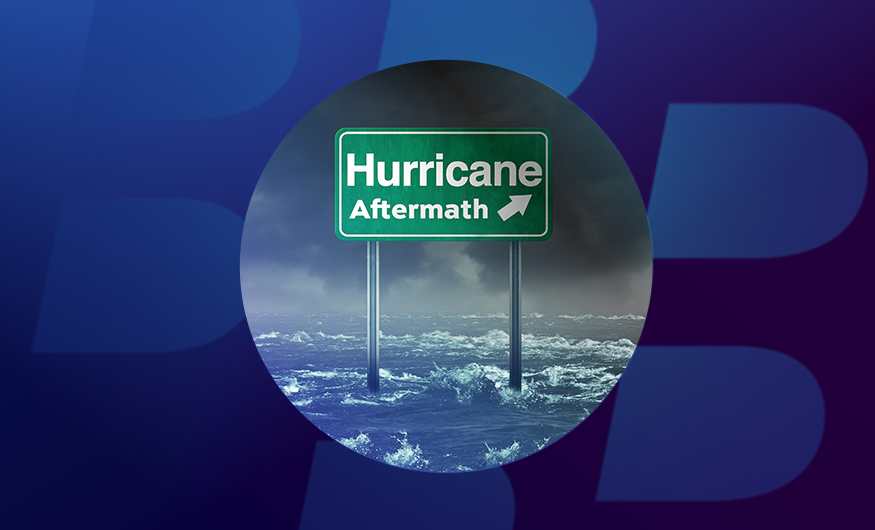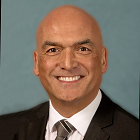Hurricane Ian: A Brutal Reminder About Critical Communications in Disasters
Hurricane Ian slammed Florida as an “absolute beast” of a storm, with sustained winds of 155mph at landfall. Some lost their lives, some lost their homes, and many residents face an immense cleanup that will take significant time.
Recovering from a storm of this magnitude requires coordination among government agencies, power crews, and emergency services to begin repairing the damage from both winds and water. And coordination requires fast and accurate communication.
In some parts of Florida, open lines of communication did not exist following the storm. The day after the storm moved through, the Collier County Sheriff’s department turned to Facebook to share this message:
“For those...worried about family and loved ones: we have limited power, virtually no cell service and no internet. This is especially the case in the coastal area where the surge came in. Portable towers are on the way for cell service. Chances are your loved ones do not have the ability to contact you.”
That message is heartbreaking. And as a former police officer, I have seen a lack of communications get in the way of too many response and recovery efforts. In my experience, it slows everything down at times where responders need to be moving quickly.
Lessons From Previous Weather Emergencies
When it comes to emergency preparedness, history is our best teacher. With recovery from Ian underway in Florida, let’s turn our attention to a recent storm of even greater magnitude: Hurricane Maria. In the busy hurricane season of 2017, Maria hit Puerto Rico with sustained winds of 175 mph (280 km/h). As a result of the storm, residents of Puerto Rico suffered months-long blackouts when the island’s electrical grid collapsed.
In addition to the destruction of the region’s power supply, homes, bridges, and roads were also destroyed. Residents and recovery personnel simultaneously lost both vital utilities and infrastructure. And 95.6% of all cellular communication sites in Puerto Rico were out of service in the days following the hurricane. The storm also knocked down the Puerto Rico Electric Power Authority’s radio network of repeaters across the island.
The lack of communication magnified the impact of the devastating natural disaster.
Critical Communications Preparedness Mitigates Loss and Chaos
Even though each disaster brings unique challenges, response teams always benefit when they can reliably communicate, coordinate and plan.
In an after-action report from Hurricane Maria, the experts agreed that preparation and training across state and federal agencies could result in better outcomes in the future. But those involved in implementing rescue and recovery plans must be able to share information with each other, something that was extremely difficult following Hurricane Maria.
Communications are so critical to recovery that the report spells out this specific recommendation:
“Communication infrastructure should be treated as critical infrastructure that should be restored to enhance broader restoration planning efforts.”
In other words, communication is key to restoring everything else after an emergency. And it takes planning to make that possible. This is something to consider for any natural disaster or other emergency that could impact normal operations, or lead to an incident response in your region or at your organization.
Critical Event Management Communication Strategy at Disasters
Coordination and collaboration are essential in preparing for — and recovering from — hurricanes and other natural disasters. As part of your planning, I suggest adopting an effective critical event management communication (CEM) strategy and platform.
This frees first responders and agencies from siloed and bottlenecked communications, or from having to rely on social media or other inherently unreliable and unsuited communications channels to support decision-making. I know this because I’ve seen professional-grade CEM systems and strategies work in practice, and I’ve experienced the powerful difference it makes.
This type of approach also eliminates the risk of using consumer-grade apps or messaging platforms, which some agencies attempt to rely on.
CEM Approach Also Supports Long-Term Goals
The need for a multi-agency crisis comms platform does not end once the storm has passed. In cases like Maria and Ian, the initial impact is followed by massive restoration efforts to normalize operations, which will be worked on for months afterward, if not years.
Displaced residents will need to be rehoused, and it is vital that they are kept regularly informed. When it comes to coordinating the huge number of resources involved from central government through to the local tradespeople, the ability to communicate effectively should not be underestimated.
With the right tools, cloud-based resources can now make it possible to communicate with all agencies, responders, utilities, and the public — regardless of the devastation after something like Hurricane Ian rolls through.
One option to consider for your organization is BlackBerry® AtHoc®, which solves multiple critical communications challenges at one time, including:
- Able to communicate across multiple agencies, departments, and responders, regardless of the networks they use
- Cloud-enabled to work even when your local power is out by running on “an out of band” network-based elsewhere
- Includes templates that can be prepared ahead of a disaster, so when a critical event like a hurricane brings destruction, emergency managers can execute and communicate prepared plans and make changes in real time, as needed
Responders and emergency agencies with the proper communication tools can focus on helping residents instead of spending time trying to communicate with traditional and typically outdated systems. AtHoc is designed to make it easy for your organization to prepare a response plan, train staff, and refine emergency workflows.
Resilience Following an Emergency
I’ve written quite a bit here about the resilience of communications systems but there is most certainly a human side to this.
As a former first responder, one thing that often surprises me is the way communities pull together and reveal how resilient they are following an emergency situation. Residents of Puerto Rico showed this determination following Hurricane Maria and now the people of Florida are showing it in the wake of Hurricane Ian.
Recovering from disasters of this scale can take years but when communities pull together, it can transform areas once devastated by a disaster.
About Chris Ullah
Chris Ullah is a retired Police Superintendent and Solutions Expert for BlackBerry AtHoc Critical Communications.

